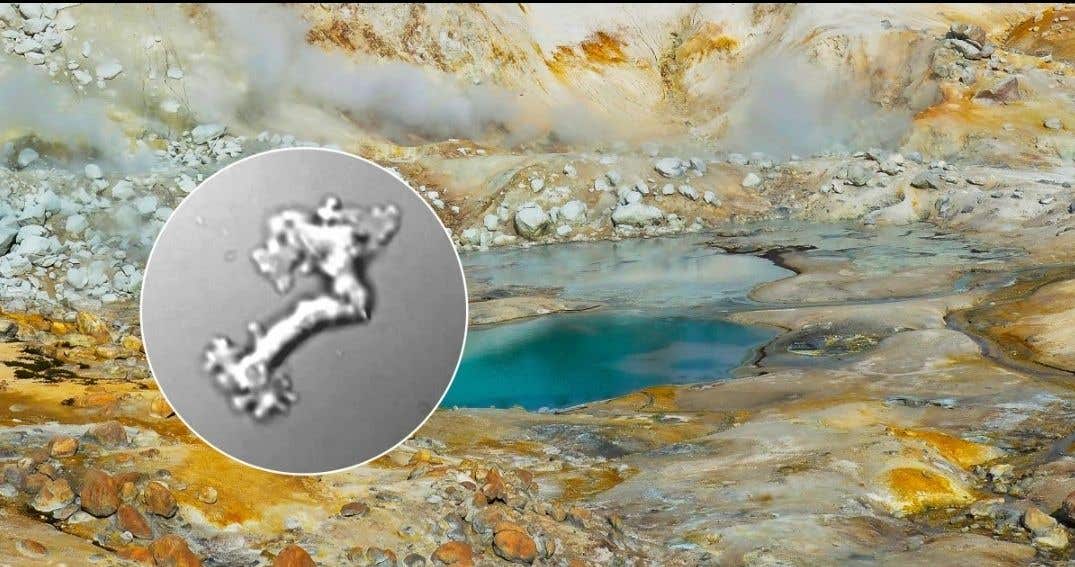New discoveries in synthetic DNA could lead to modified genes and new biofuels
Contrary to naturally occurring DNA, synthetic DNA could allow scientists to engineer fresh genes or enhance existing ones.

[June 3, 2023: Staff Writer, The Brighter Side of News]
Today, scientists are looking beyond the naturally occurring DNA, exploring a bold, new frontier: synthetic DNA. (CREDIT: iStock Images)
Understanding DNA, the blueprint of life, is pivotal for biological sciences. This genetic material holds a vast reservoir of information, responsible for building cells and proteins, the basic units of life. The mystery of its structure, initially unraveled by James Watson and Francis Crick in 1953, still piques scientific curiosity.
Today, scientists are looking beyond the naturally occurring DNA, exploring a bold, new frontier: synthetic DNA.
The familiar double-helix model proposed by Watson and Crick (WC), where specific molecules known as adenine (A), thymine (T), cytosine (C), and guanine (G) pair up, has held sway for more than seven decades. However, it only gives a part of the story. This model fails to explain why only these four bases exist and why they are the ones used in DNA.
The DNA conundrum
The WC model's importance is undeniable—it illustrates how DNA carries the life-supporting genetic information, paving the way for many scientific breakthroughs. Yet, the question of why we have these four specific DNA bases remains.
Related Stories
A mathematical model developed by biologist Eörs Szathmáry offers a compelling theory. According to his work, the four DNA bases could represent the optimal set for life to thrive due to DNA polymerase's ability to maintain fidelity. More pairs could mean more matches for the polymerase to account for, suggesting the nature of the balance between complexity and efficiency.
Nevertheless, this model doesn't confine DNA to the naturally occurring base pairs. A growing field, synthetic biology, is working on expanding the boundaries of our understanding, revealing that the WC bases aren't the only molecules that could support life.
Synthetic DNA: The frontier of biological science
Researchers from the University of Surrey have been delving into the possibilities offered by synthetic DNA, exploring its potential for transformative advancements across multiple domains.
Hachimoji DNA is a synthetic nucleic acid extension of DNA, formed by an additional four bases, Z, P, S, and B, that can encode information and sustain Darwinian evolution. (CREDIT: RCS Advances)
Contrary to naturally occurring DNA, synthetic DNA could allow scientists to engineer fresh genes or enhance existing ones. This revolutionary science opens doors to new dimensions in medicine and biotechnology, extending our grasp over Darwinian evolution, and thus, genetic systems.
One of the Surrey team's recent groundbreaking studies involves Hachimoji DNA. This is a synthetic form of DNA not yet found in natural life. The study investigates how protons move in this unique form of DNA.
The Surrey team deployed a method known as density functional theory, calculating the speed of proton transfer and its relationship with temperature. The study revealed that proton transfer occurs more easily in Hachimoji DNA compared to regular DNA. Specifically, certain pairs of bases in Hachimoji DNA allow protons to move 30% faster than in regular DNA, suggesting that Hachimoji DNA could have a higher mutation rate compared to regular DNA.
A scheme that shows all base pairs proposed in hachimoji DNA by Hoshika. (a) corresponds to the standard Watson–Crick pairs, while (b) corresponds to the analogous hachimoji extension. The letters represent the atoms in the bases, while R is where the base connects to the phosphate backbone. (CREDIT: RCS Advances)
Dr. Louie Slocombe, the lead researcher on the project at the University of Surrey, noted the significant potential of this research. “The exploration of Hachimoji DNA and its distinctive properties presents exciting prospects for synthetic biology and genetic research. Our study provides invaluable insights into the dynamics of proton transfer within Hachimoji DNA, shedding light on its potential implications for mutation rates," he explained.
Hachimoji DNA: The 8-letter genetic code
Hachimoji DNA is a synthetic DNA that expands the genetic code from the usual four letters (A, T, C, G) to an eight-letter code incorporating additional building blocks (Z, P, S, B). This expanded code allows for more diverse genetic information, creating new opportunities in genetic research, synthetic biology, and nanotechnology.
The minimum energy paths for the single and double proton transfer reactions. Here, (a) corresponds to the single proton transfer reaction path for Z–P to its zwitterionic state. Whereas (b) shows the double proton reaction of S–B, where a zwitterionic intermediate state is formed. (CREDIT: RCS Advances)
Dr. Slocombe further emphasized, “This knowledge has the potential to guide future advancements in DNA engineering and expand our comprehension of genetic systems here on our planet and beyond." Hachimoji DNA holds promise for engineering organisms with unique capabilities and developing innovative drugs.
The co-author of the study, Dr. Marco Sacchi from the University of Surrey, reinforced the university's commitment to scientific discovery and innovation. “The University of Surrey remains committed to pioneering scientific research and driving transformative discoveries. The investigation into Hachimoji DNA exemplifies the University's excellence in quantum biology and the potential of this new field of research to unravel the intricacies of genetic systems and harness the power of innovative technologies,” he affirmed.
The exploration of synthetic DNA signifies a quantum leap in biology, offering promising implications for our understanding of life as we know it. With studies like the ones carried out at the University of Surrey, we are on the precipice of realizing the enormous potential that the field of synthetic biology holds for our future.
For more environmental science news stories check out our Green Impact section at The Brighter Side of News.
Note: Materials provided above by The Brighter Side of News. Content may be edited for style and length.
Like these kind of feel good stories? Get the Brighter Side of News' newsletter.



